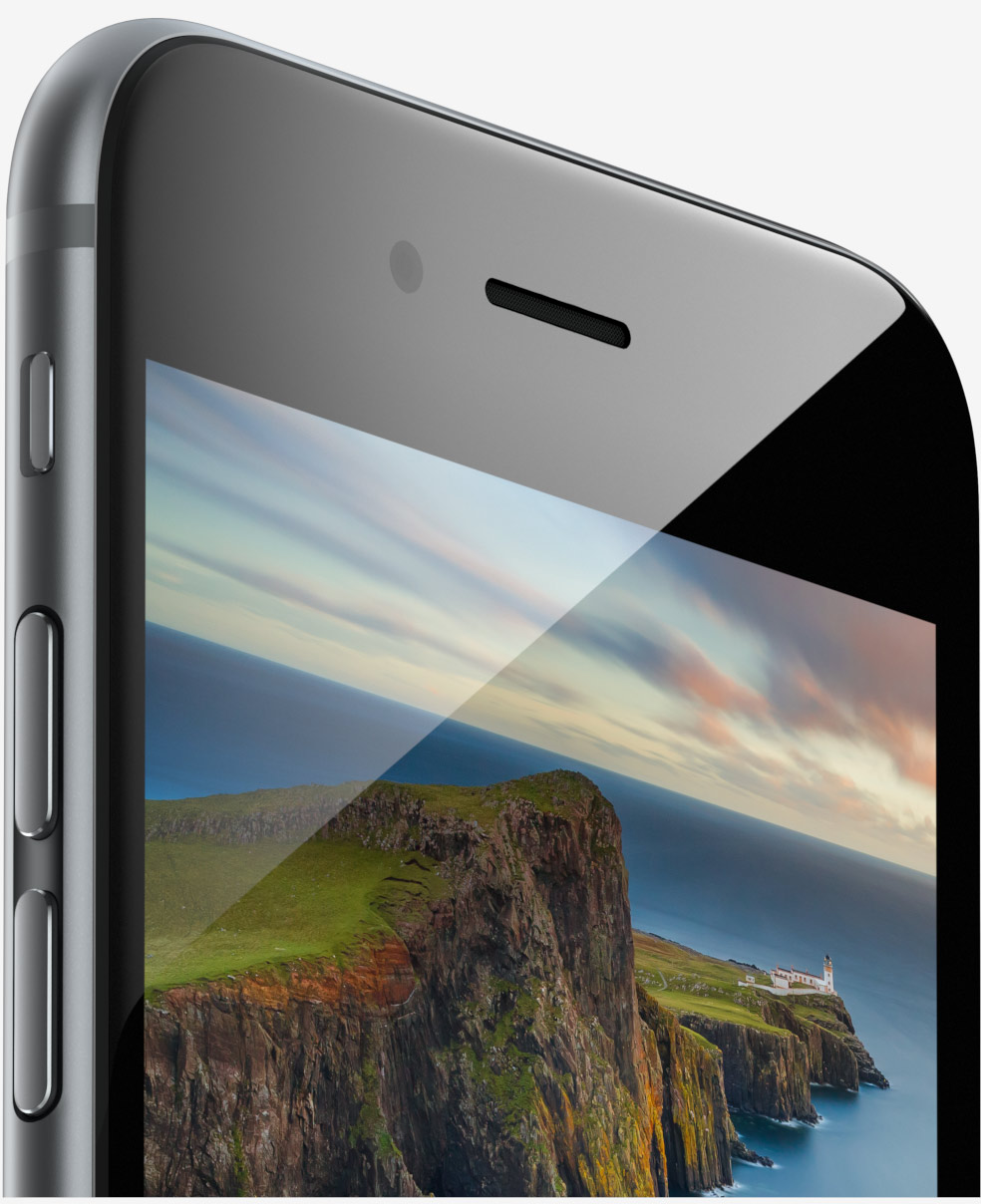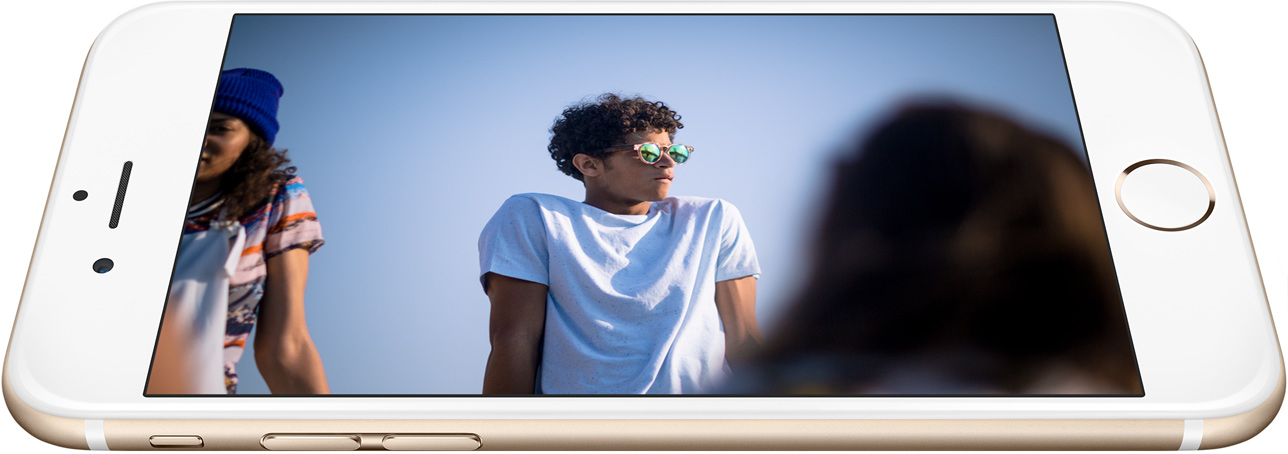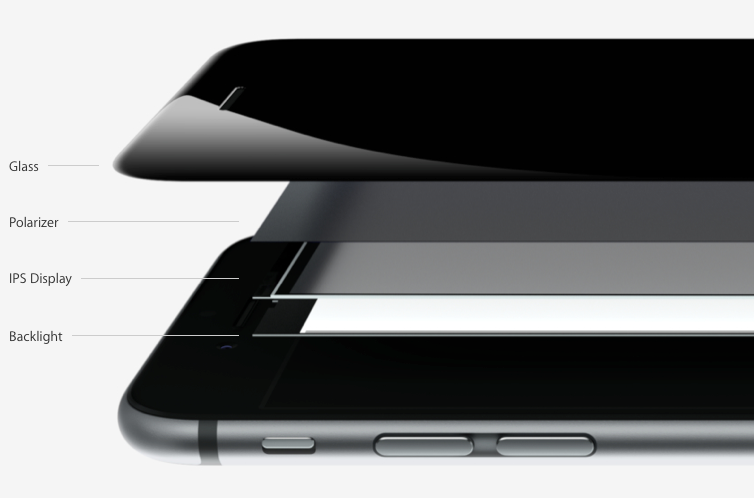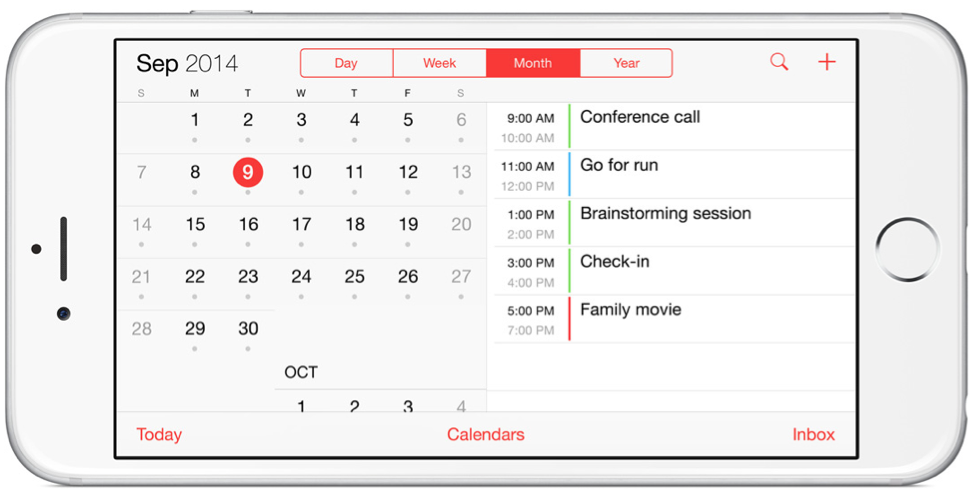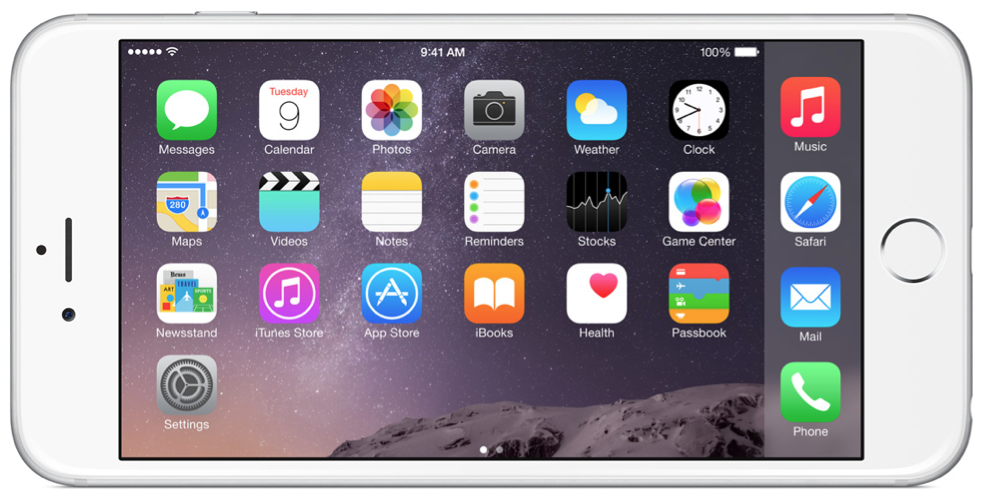For most people, the first thing that stands out about the new iPhone 6 display is that it’s bigger, and with the iPhone 6 Plus, it’s a lot bigger. Naturally, this means both screens must have a higher pixel count in order to maintain Retina status, but the real question – are these displays simply bigger, or actually better – still awaits this Friday for an answer. Apple certainly considers them to be better, as they’ve advertised the new ‘Retina HD’ display in the iPhone 6 siblings as having higher contrast with wider viewing angles and improved polarization, but the real difference between Retina and Retina HD remains somewhat obscure.
While Retina displays have been in existence for over four years now since they made their first appearance in the iPhone 4, Apple’s new Retina HD display seems to greatly improve upon the old formula.
Pixels
Although there wasn’t sufficient time at Apple’s event to explain everything about the new display, an effort was made to discuss dual-domain pixels, a technology that increases the viewing angle of an iPhone’s screen. Because the larger display makes sharing content easier (ie. watch a video on your iPhone with a friend next to you), Apple has invested time into retaining true-to-life colors no matter from what angle you’re viewing the display.
More Pixels
It’s somewhat disappointing that, while the iPhone 6’s screen certainly has more pixels in it than the iPhone 5s, Apple didn’t change the pixel density – the number of pixels per inch (ppi) – from its previous 326ppi and instead relied on other technologies to improve the 1334×750, million-pixel display.
The iPhone 6 Plus, however, packs 401ppi into its 1920×1080, 5.5-display, making for over 2 million total pixels. Despite this pixel density being relatively average for higher-end smartphones, judging from Apple’s assessment of the Retina HD screen, it’ll still be on par with, if not notably better than competing smartphone screens.
Colors
Besides the dual-domain pixels for better viewing from more angles, considerable effort has been made to enhance the display’s color quality. With full sRGB color standard and a higher white balance, the screen is said to be significantly better-looking. Apple has also improved the polarizer in the new display, increasing clarity when viewing the iPhone’s screen while wearing sunglasses.
The traditional method of increasing a display’s resolution and quality is to increase pixel density, which has led to 2K displays in smartphones. But Apple decided that’s not the best way and developed an alternate – and supposedly better – method of increasing quality, which utilizes photo alignment. This process uses ultraviolet light to align the liquid crystals in the display to their proper positions, providing a superior viewing experience, stemming from deeper blacks and sharper text – all without having to increase pixel density.
Thinness
Apple’s Retina HD display has gotten significantly thinner, meaning that more than ever will the glass lie flush with the display, giving the impression that nothing is between your finger and the content. Similar to a sticker lying on the face of a display model device, the Retina HD display is said to look almost fake – too good to be true – until you touch it and are able to interact with what appears to be floating on the surface of the device.
Size
With a larger display comes a larger canvas, on which more content can be viewed and more work can be done. Both the 4.7- and 5.5-inch displays have their advantages, with the smaller being more suitable for one-handed use, and with the larger making more sense for completing serious tasks.
The larger displays also help to ease viewing for users with visual impairments, as Display Zoom, an option for increasing content size across the device, will undoubtedly be a feature of choice for customers with difficulty viewing smaller text and icons.
Summation
Not only will the iPhone 6 and iPhone 6 Plus displays be considerably bigger, but Apple has worked to make them noticeably better at displaying content. Viewing and editing photos, watching videos, browsing the web, and playing games are all common tasks that are going to be even more enjoyable and immersive when performed using these beautiful displays.
Apple has also placed a focus on accomplishing work on both devices with its pre-installation of iWork and iLife on the 64GB and 128GB models. With the iPhone 6 Plus, the ability of apps to display two simultaneous panes while in landscape mode, similarly to an iPad, and the addition of a 128GB storage tier both point to Apple’s belief that the iPhone can be used for content creation, not only consumption, making the decision to introduce larger displays logical for the interests of both casual and power users alike.
Related post: iPhone 6 design: seamlessly thinner, elegantly bigger
